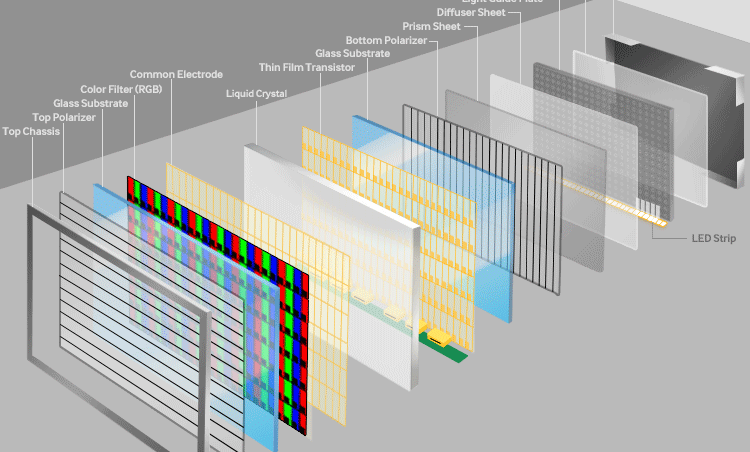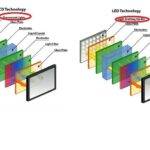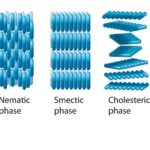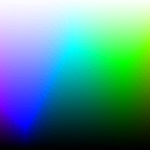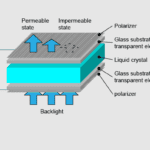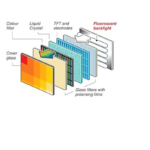LCD TV technology is television technology which is based on liquid crystal material. If we compare LCD LED with old tv technology like CRT and Plasma television then this required very less power. So we can also say this technology is power efficient. As it’s required very less power it also generate less heating. So both side win win situation. But if we talk about plasma displays then they work on the principle of blocking light rather than emitting.
LCD display is also uses either a passive matrix or an active matrix display grid. The active matrix LCD is also known as a thin film transistor (TFT) display. Which is also we can say normal regular used colour television
The passive matrix LCD have a grid of conductors with pixels located at each intersection in the grid. A current is sent across two conductors on the grid to control the light for any pixel. An active matrix has a transistor located at each pixel intersection, requiring less current to control the luminance of a pixel. For this reason, the current in an active matrix display can be switched on and off more frequently, which improves the refresh rate. Now a day 120Hz 144Hz 165Hz and 240Hz is most running in market for retail users.
Also some passive matrix LCD have duel scanning concept. So it will scan twice at the time of scanning. Also we can say active matrix considered as a superior technology.
An LED TV is also one type of LCD because technology behind the manufacturing is same. But only back light use will create difference. If we talk about LCD it have ordinary cold cathode fluorescent lights (CCFLs). Which is also create hating and consume more power.
But an LED have cold white LED backlight which is operated at very low power and also its self it generate very less heating as compare to LCD.
If we talk about internal component also most all component is same like motherboard, T-con board, Scalar PCB, Source COF IC, Y COF IC (Gate COF). But here only change is inverter LED TV have small size inverter but LCD have a bulky inverter because they have to operate CCFLs (cold cathode fluorescent lights).
If we talk about LCD LED TV vendors then this is following one LG, Samsung, Sony, VU, Toshiba, Mitashi, Mi, Philips, Panasonic and much more there is also some local chines low brand is there in market.
If we talk about LCD panel manufacturer then that is following one LG, Samsung, BOE, Panda, Chimei, AUO, CMO, innolux, Cshot etc. but if we talk about brand then only two manufacturer is leading this market LG and korean giant Samsung.
Pros: Not prone to burn-in. Available in smaller sizes than plasma, so may be a better option depending on the available space. Also there is very less wait as compare to ordinary plasma and some CRT. And as compare to CRT there is very less operating voltage or we can say it completely operated via frequency or pulse. So due to that very less external interference is there.
Cons: Can suffer from slower response, which can create a ghosting effect. Some models are also prone to the screen door effect, which means that a faint mesh pattern may be visible. Also now a day some manufacturer is removing COF IC or we can say using very less number of COF ICs for aggressive cost-cutting but due to that it’s also harm panel glass internal structure and overall working life is decrees.
Conclusion: There are still CRT is familiar with it robust operation and toughness in some rural areas. But now a days due to drastic fall in LCD LED television urban area user shifted 90% to the LCD LED technology for Asian country. But if talk about some American and European country then they already shifted from LCD, LED to OLED, QLED or even flexible OLED (Rollable OLED).
Also Read:
